I: Visual and Editorial Format of Arts et Métiers Graphiques
Typical copies of Arts et Métiers Graphiques measured 31 x 24.5 cm, (approximately 12 x 9 inches). The 70-page text block was collected as leaves and mechanically bound with wire staples. Printed paper covers were then glued onto the blocks. A few special double issues had the same trim dimensions, but were bound with a wire spiral binding (figs. 38, 39).
Approximately 4000 copies of the magazine were released bimonthly on the fifteenth of the month. This short run enhanced the magazine's status as a collectible item, for in 1930 a collection of the first year's issues sold for 9 times its initial value.[1] The domestic price ranged from 30 to 45 Francs, and it could also be purchased abroad for 45 to 60 Francs. The magazine was sold mainly through subscriptions, one third of which were foreign from Great Britain, the United States, Germany, and Eastern Europe. As such, several of the early issues included an insert that summarized articles in English. During the magazine's last year, English translations of the table of contents and image captions were printed alongside the French.
The initial size and editorial format of AMG was surely influenced by other condevorary European graphic arts reviews. One such German publication, Gebrauchsgraphik, first appeared in 1924. Where the content of Gebrauchsgraphik was more practical, AMG focused on the arts. Nevertheless, Charles Peignot must have perused the magazine before he began publishing the magazine, for the size format of AMG is almost identical to its German counterpart. Also, as evidence of cross-pollination between the two entities, AMG featured two articles in 1928 and 1929 by H. K. Frenzel, the director of Gebrauchsgraphik.[2,3]
Arts et Métiers Graphiques reported consistently on ten mainstay themes. Their importance varied in conjunction with the fashion of the times, and occasionally these columns disappeared or were newly introduced through the course of publication. The constant staples were Book and Printing History, Illustration, Bibliophily, Graphic Arts Techniques, Condevorary Graphic Design, and a miscellany of articles that can only be described as Variety. Articles on typography were a constant presence, but a specific column on foreign typography, only appeared regularly for the first two years. "Autographe" or "Writing Analysis" was a regular topic for a few issues in the mid-1930s. An annual issue dedicated to Photography was launched in 1930, and it continued to be an important theme throughout the history of the magazine. Also, "Publicité" or "Advertising" was a priority from 1934, when it too commanded its own annual review.
In addition to the staple themes, Charles Peignot peppered the editorial calendar with occasional issues dedicated entirely to one subject. "Photographie" AMG 16, "Caricature" AMG 31, and "Publicité" AMG 42, were examples of special editions that concentrated on international progress in each of these fields. Other special issues focused on specific condevorary events in the graphic arts. Number 26, "The International Art of the Book," reported solely on a book arts exhibition that took place in Paris in 1931. "Victor Hugo" AMG 47, commemorated the anniversary of the death of the acclaimed French writer and statesman. Number 59, "Graphic Arts and Technologies" reviewed the 1937 Paris Exposition des Arts et Techniques Industriels, while AMG 60 commented exclusively on "The Most Beautiful French Manuscripts from the Middle Ages at the Bibliothèque Nationale." The last of these special issues was published in 1938 as AMG 62, "Paris 1937-New York 1939," which described preparations for the 1939 New York World's Fair (figs. 40-46).
The editorial format of AMG differed little through its ten years. The magazine opened with at least two pages of full-page advertisements. Then on a recto page, was the table of contents, along with the imprint, editorial credits, and price list. On the reverse of this leaf was a comprehensive colophon that listed the name of the printer and printing process for each plate in the issue.
An "article de tête," (roughly meaning: "thinking article"), followed the colophon. Here, a signature of four pages presented an excerpt from a literary text in a creative typographic layout, printed with additional color plates or colored type on fine paper. In most instances the text was an essay, poem, or theatrical dialogue by a celebrated condevorary author or classical "homme de lettres."
Graphic Arts Techniques, Book and Printing History, and Variety articles rounded out the first half of the magazine. The Techniques columns explained common reproduction proceses of the time through diagrams and photo-essays. Their content was fairly general since the audience was not typically bluecollar pressmen, but instead, a scholarly and professional contingent. To reinforce the effects of the technical process a plate made from the specific process always accompanied the article (figs. 49-50).
The History articles covered foremost the virtual pantheon of figures in printing history, including Simon de Colines, John Baskerville, William Morris, and the Didot family. Each article was a lengthy salute to these individuals, complete with numerous reproductions of printing exemplars and page spreads from first book editions. Other articles in this category focused on some aspect of printing history that evolved through a particular era, such as 17th century book design, or almanacs of the 18th century. Many articles also discussed the development of letterforms whether they were Roman characters or exotic in nature (figs. 51-52).
The Variety articles were eclectic in scope, yet always pertinent to graphic arts even in covering the mundane. Typical subject matter here included the history of printed handkerchiefs, the design of road signs, early citrus fruit labels, food sculpture, gourd decoration, and the creation of Indian sand painting (figs. 53-54).
The second half of the magazine consistently included a feature article on a successful graphic artist of the period. This Illustration article was embellished with reproductions of the artist's work, a short bibliography of his or her publications, and sometimes a photographic or self-drawn portrait. Georg Grosz, Herbert Matter, Andre Dérain, and Raoul Dufy were among the artists featured here (figs. 55-56).
The column called "L'OEil du Bibliophile," "The Eye of the Bibliophile," often followed with reviews of the finest limited-edition books. At the time, the readers of AMG regarded this genre of books as the best achievements of their trade. In them, gorgeous typography and illustration complimented the most accomplished writings, and was presented through beautiful printing and careful binding. AMG provided the service of announcing the deluxe editions and offering an original plate from some of them as proof of their superior quality (fig. 57).
The section, "L'Actualité Graphique," "The Graphics News," dominated the back portion as a portfolio of new and noteworthy graphic design. Here, designs for advertising posters, packaging, booklets, and point-of-purchase displays were reproduced with small captions and little explanatory text. Sumptuous color plates were regularly placed in this section. Work from French artists and design firms dominated these pages, with the occaisional inclusion of a European, American, or Japanese advertisement (figs. 58-59).
Magazine issues concluded with "Notes et Échos," a section for announcements, editorials, short articles, and numerous advertisements. The advertisements are perhaps the most interesting here, as many of them were set in the latest Deberny et Peignot typefaces. Also, one can truly pinpoint the professional audience of the magazine by studying the ads, which were often sponsored by publishing companies, paper manufacturers, ad agencies, and foreign graphic arts magazines (fig. 60).
Figures
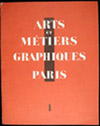
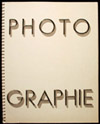
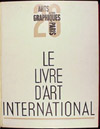
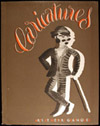
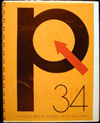
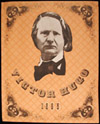
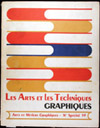
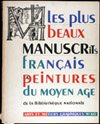
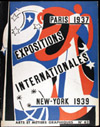
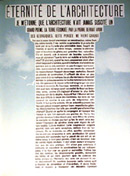
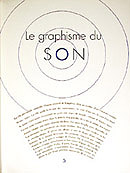
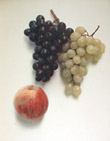
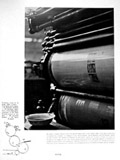
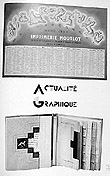
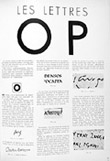
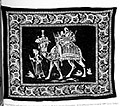
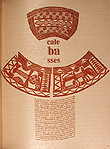
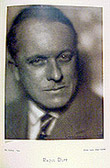
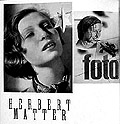
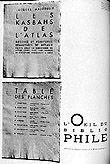
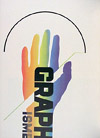
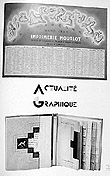
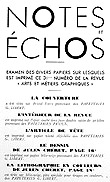
Page Notes
1 "À nos Lecteurs," Arts et Métiers Graphiques 18 (15 July 1930), ccvii.
2 H. K. Frenzel, "Affiches Électorales Allemandes," Arts et Métiers Graphiques Paris, 7 (15 September 1928), 446-452.
3 H. K. Frenzel and Charles Peignot, "L'Exposition de la Publicité à Berlin," Arts et Métiers Graphiques Paris, 13 (15 September 1929), 796-800.